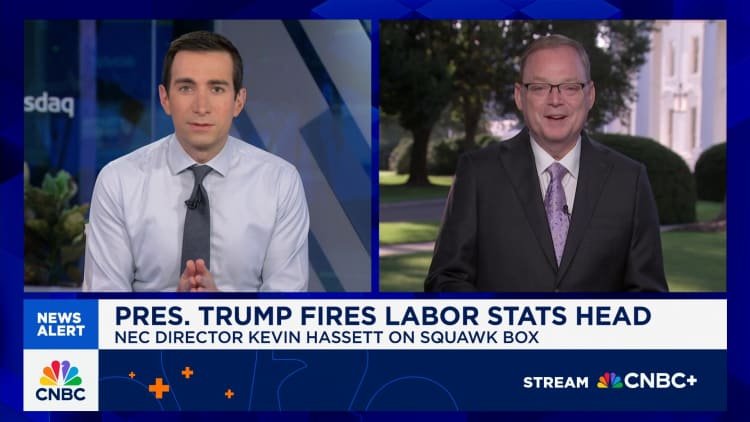Understanding the Current State of the U.S. Economy
As recent economic indicators suggest, the U.S. economy is experiencing a notable slowdown, raising concerns among economists and policymakers alike. The latest jobs report reveals that nonfarm payrolls increased by only 73,000, falling short of expectations and reflecting a troubling trend in employment growth.
Weak Job Growth Signals Economic Slowdown
The downward revisions in job growth figures for May and June have decreased the three-month average to a mere 35,000 jobs per month, significantly lower than the same period last year. This decline in job creation is often a precursor to recessions, signaling a less robust economy than traditional metrics may imply. Experts like Luke Tilley, chief economist at Wilmington Trust, note that this could translate into broader economic challenges.
Currently, Wilmington Trust estimates a 50% chance of the U.S. entering a recession, influenced by longer-term impacts from tariffs that threaten to reduce consumer spending—an essential component of economic activity. In the first quarter, consumer spending drove approximately 68% of all economic growth, making any downturn in this area particularly significant.
Consumer Behavior and Economic Growth
Despite the sluggish job market, there are still some positive indicators. In the second quarter, the gross domestic product (GDP) rose at an annualized rate of 3%, creating an impression of a healthy economy. However, looking at the first half of the year reveals an average GDP growth of just about 1.2%.
The surge in Q2 is partially attributed to a decline in imports, as companies rushed to stock up before tariffs were imposed. Interestingly, the first quarter saw a shrinkage of 0.5% in GDP due to the same import surge, illustrating the complexities of trade dynamics in the current economic landscape.
Given the latest jobs report, economic forecasts may become less optimistic. Some economists predict that the remainder of 2025 and early 2026 may witness weaker growth compared to the earlier parts of 2024. Increased tariffs are identified as a pressing concern, potentially reducing consumer and business spending further, which may lead to a recession.
Future Economic Outlook
Goldman Sachs anticipates growth to slow down to about 1% in the last two quarters of the year. Factors contributing to this decline include decreasing consumer spending, inflation driven by tariffs, and cuts in government transfer payments expected in the fourth quarter. The recently released payroll data aligns more closely with broader economic indicators, illustrating a pattern of slower growth.
White House officials maintain that the economy is fundamentally sound and expect improvements with the implementation of President Trump’s forthcoming fiscal measures. However, differing views emerged when Trump criticized the jobs report as "fake," leading to more discussions around employment figures.
The Role of the Federal Reserve
Trump administration officials have called on the Federal Reserve to lower its benchmark interest rates, which influence various consumer loans and mortgages. Though the Fed decided to maintain current rates recently, continual signs of economic weakness could prompt a shift in this approach.
Recent housing market data reveals declining buyer interest amid high prices and mortgage rates, raising questions about the health of the real estate sector in such a volatile economy. Many economists warn that the current economic indicators reflect a troubling trend that might indicate a recession is imminent.
Market Responses to Economic Trends
Despite these concerning economic signs, responses in financial markets have been mixed, with some resilience observed among stock indices. While Wall Street has seen fluctuations, there are hopes for a long-term tariff agreement between the U.S. and the European Union that could stabilize the market.
Nevertheless, trading has revealed a level of complacency among investors, who seem to overlook the tumultuous political landscape and potential economic pitfalls. While many anticipate continued growth, the reality is that the slow pace of economic activity presents challenges that must be addressed carefully.
Market analysts are advising caution, especially in assessing risk exposure within investment portfolios. As uncertainty looms regarding both economic performance and Federal Reserve actions, many experts recommend that investors re-evaluate their strategies to mitigate potential risks associated with an unpredictable economic environment.
In conclusion, while there are pockets of resilience in the U.S. economy, the prevailing trends in job growth and consumer behavior warrant careful attention. Understanding these dynamics is crucial for navigating the challenges that lie ahead.
